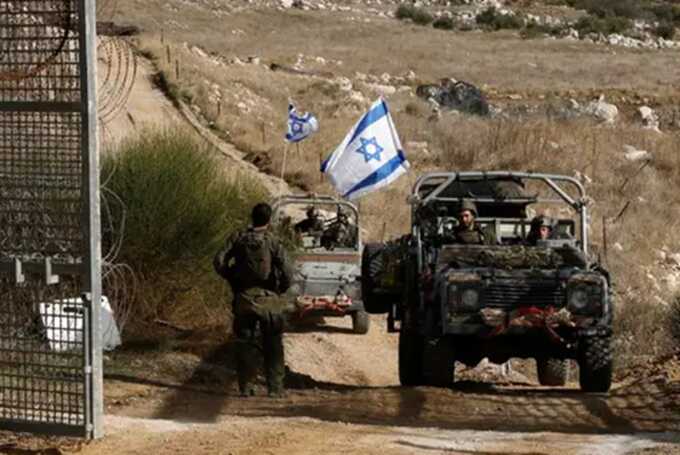

Events in Syria have moved at lightning pace over the last two weeks.
Following a meeting between Iran, Syria and Iraq, Iran withdrew their Revolutionary Guard personnel from Syria, reported by Andrew Fox lbc.co.uk
Two days later, the Assad regime had fallen. In Assad’s place stands Abu Muhammad al-Jolani, a former Al Qaeda and Islamic State commander, now leader of Hayat Tahrir Al-Sham (HTS)—a proscribed terrorist group in the UK.
In recent years HTS has run northwest Syria through their administrative arm, the Syrian Salvation Government (SSG), but they began life as the al-Nusra front, a hardline jihadi offshoot of Islamic State itself.
Kurdish Syrian Defence Force militias in the north and east of Syria also made gains along the west bank of the Euphrates River, cutting off Iran’s overland border through Syria to Lebanon. A variety of other rebel militias have also made gains all over the country, from south to north.
In response, the US and Israel have conducted days of airstrikes to deny rebel groups possession of former Assad regime assets. They have destroyed strategic and chemical weapons, fighter jets and naval vessels. Islamic State militias have also been attacked.
After assisting UN forces to repel a rebel attack in the area of separation between Israel and Syria, Israel has occupied Mount Hermon and other defensive positions inside Syria itself. The National Syrian Army, with Turkish close air support, has attacked American-backed Kurdish positions in the north and east of the country, leading to intense fighting.
The situation is currently chaotic. It is far too early to make a prediction about Syria’s future—there are an unprecedented number of internal and external variables.
Going forward, much will depend on the proof of al-Jolani’s assurances of moderation. In recent years, HTS has claimed that they are reformed from jihadi terrorists to anti-Russian and anti-Iranian Syrian nationalists. The determined destruction of Assad regime military equipment shows that the US and Israel have little faith in these promises. We have also seen videos of HTS fighters stating extreme opinions on attacking Jerusalem. Of HTS’s forebears, neither Islamic State nor Al Qaeda are known for their moderation.
Al-Jolani’s first task will be to consolidate HTS control over the areas they have seized, including Syria’s capital, Damascus. Already, the horrors of the Assad regime are being laid bare. Men, women and children have been liberated from Sednaya prison.
More than 100,000 people disappeared under the Assad regime, many of them to Sednaya. Images of torture, starvation and rape have emerged. The people of Syria will take time to recover from Assad’s horrors, and whilst the people of Syria celebrate for now, we must hope that HTS is at least an improvement.
HTS has their own problems, however. The Kurdish-led Rojava region in North and East Syria will not be keen to be subsumed under HTS national governance. Turkey has previously backed HTS, but their main proxy is now the National Syrian Army, currently attacking Rojava. Turkey will not be prepared to allow an autonomous Kurdish administration, due to their own long-standing conflict with the Kurds.
This creates an innate tension between HTS, the NSA, and Kurdish forces in Syria. It will not be resolved easily, and the likelihood is more violence to settle this matter. It also creates a direct tension between NATO members, as US- and Turkish-backed forces fight one another. This will require careful deconfliction to ensure that NATO members do not kill one another’s troops on the ground in the provision of air support to both sides.
Assad’s regime had been reliant on Russian air support. With their resources focused on the Ukraine war, Russia was either unwilling or unable to continue supporting their ally. The naval base at Tartus has long been Russia’s only port in the Mediterranean. Without it, Russian ships will have to negotiate passage through the Turkish straits into the Black Sea to refuel and resupply. Russia will negotiate with HTS to try and retain Tartus.
The fall of Assad is a disaster for Iran. Assad was a key Iranian ally, where HTS are explicitly anti-Iranian influence in Syria. Syria has long been used as a supply route from Iran to their proxy Hezbollah in Lebanon, and that land bridge has now been cut. It will now be far harder for Iran to help Hezbollah reconstitute after their battering at the hands of Israel over the last few months.
This is good news for Lebanon, presenting an opportunity for Beirut to stabilise their governance with a far less influential Hezbollah. It is also good news for Israel, with the threat from Hezbollah now less likely to re-emerge.
The damage to Hezbollah, and an inability to rearm them, has blown a hole in Iran’s proxy strategy. Tehran has spent ten years putting a ring of proxies around the Middle East, with Hezbollah as the jewel in the crown. In the last year, Iran has seen the loss of Hamas in Gaza as a fighting entity and the defeat of Hezbollah.
Iran has now lost their arms smuggling routes to Lebanon and the West Bank. On top of that, Iran’s own missile defences were destroyed by Israeli response to Iranian missile attacks on Israel. Iran’s final fear will be an incoming hostile Trump presidency.
Tehran’s only remaining card is their nuclear programme.
Iran has activated advanced centrifuges to enrich weapons-grade uranium. They will likely face increased sanctions as a minimum, if not further direct airstrikes, to prevent them achieving nuclear power status. Iran’s rush for a nuclear weapon would redefine the balance of power in the Middle East, if successful.